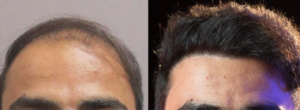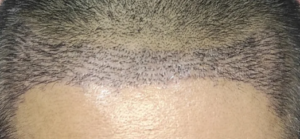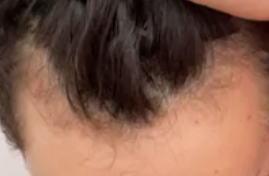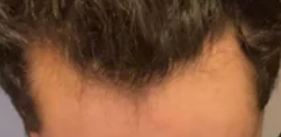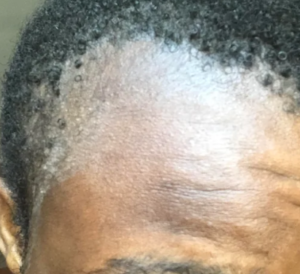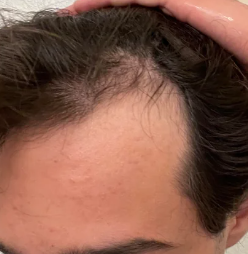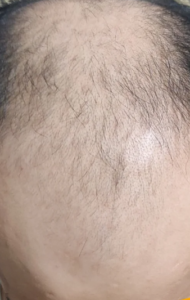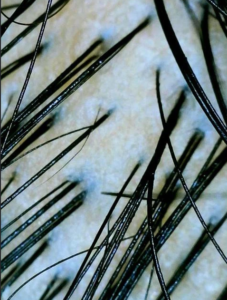I don’t know the details of your donor supply; however, it is common to transplant the frontal half of the head so that the man in the mirror has hair. I would want to assess your central hair mass and see if it is going with a considerable number of miniaturized hairs. This central area often falls out if it is weak, but transplanting a good hairline and reinforcing this central area work in many men with a poor donor supply; however, the details of your donor density and donor’s hair mass would tell me a great deal. I have done such transplants on hundreds of men.
There are many reasons to have a great hairline including photoshopping it, use of concealers, or just a very good hair transplant in a person with coarse hair. I often show this repair job I did with dense packing of the hairline grafts, to show what a normal hair transplant should look like: https://baldingblog.com/wp-admin/post.php?post=9864&action=edit
I reposted this podcast for those of you who have not seen it. It has been widely received on Dr. Gary Linkov’s Podcast site.
Thank you for BaldingBlog and for answering all questions about hair loss! I have a bit of a less common question although I’m sure it comes up in your practice from time to time. I understand that if a balding man were to stop Finasteride then hair loss would resume and the balding pattern would advance to the stage it would have got to without Finasteride within 3 months. I also assume that if a transgender woman’s testosterone production is stopped chemically or surgically then there will be very little testosterone for the Finasteride to act upon. Would you advise continuing Finasteride for a time even after testicular testosterone production is stopped chemically and oestrogen is taken or is it fairly risk free to simply stop the Finasteride? Is there any real risk of hair loss because the Finasteride is stopped in your experience?Thank you in advance for answering this slightly less common question which will hopefully help many trans women in this situation.
You should be safe stopping finasteride; however, when hair loss occurs after finasteride cessation, there still could be a negative impact on your hair because of the intrinsic testosterone your body produces. If you don’t have problems with the drug, maybe it would be better just staying on it. Check with your doctor about this point.
The photo shows good density placement of the grafts; however, I noticed the grafts were placed in lines, like soldiers standing in formation. This will not be a problem for the patient unless his hair is straight. Straight hair at specific lengths will show this alignment of the hairs. This is a common finding as many surgeons have a sense of order, while Nature understood that hair groups were irregularly placed. In my practice, I’m a copycat, just copying what Nature would have done had it had been a hair transplant surgeon.
I’ve notice that men with Down syndrome are always going bald at an early age. Does anyone know why this would be? The only hormonal effect of Down Syndrome that I’m aware of is low thyroid. This may be a possible avenue for research. Maybe baldness is, in part, a thyroid issue.
About 50% of men will experience balding in their lifetime. That includes men with Down’s Syndrome.
Do you have advice for someone who gets water retention in the face even from 1.25 mg oral? I had no other side effects but stopped due to the puffy face. Is there a safe/simple way to mitigate that?
Maybe this medication is not for you. Theoretically, swelling can occur in hidden areas of your body, like around the heart. Speak with your doctor.
I do not doubt that this is the result primarily of using microneedling, supported by minoxidil and finasteride. Microneedling can bring out fantastic hair growth, in your case in just 4 months. The question, of course, is when and if to stop the microneedling. I suggest that it should be continued monthly, almost indefinitely, or the value you are seeing might disappear. These results are comparable to a hair transplant, but with hair transplants, you can just forget about supporting the results as they keep growing without drugs or microneedling. Congratulations, this result is outstanding.
https://www.businesswire.com/news/home/20240206170882/en/Stemson-Therapeutics-Announces-Technological-Breakthrough-in-New-Hair-Growth
Hair has been cloned before. I was told that the problem encountered was when they put the cloned hairs into mice, they all died of infected hair follicles. This was because the hairs grew in all directions and didn’t orient themselves properly; hair grew out of skin. Think of hair as a complex organ that knows up from down and develops groups of hairs that work together in this hair organ with appropriate supportive vasculature and nerves. If it all doesn’t go up uniformly and grows down instead (relating to the scalp surface), an infection may occur as this foreign body (the actual hair shaft is a foreign body to everyone’s scalp) causes problems. The game isn’t over in a basketball game until the last pass is made and the clock runs out. Let’s see what they come up with. I wish them good luck!
Yes. Finasteride does seem to work more often in the crown when the frontal area has no response. I have seen finasteride reverse crown loss in men as old as 70.
The miniaturization doesn’t exceed 20%, which is, therefore, by definition, normal or marginal. To be exact, repeat the photo with the hairs cut short against the scalp so that an accurate count can be made. Vary the location as well so we will be looking at more than one place. Also map it against a photo so I know where the photos is coming from.
Page 42 of 1247



